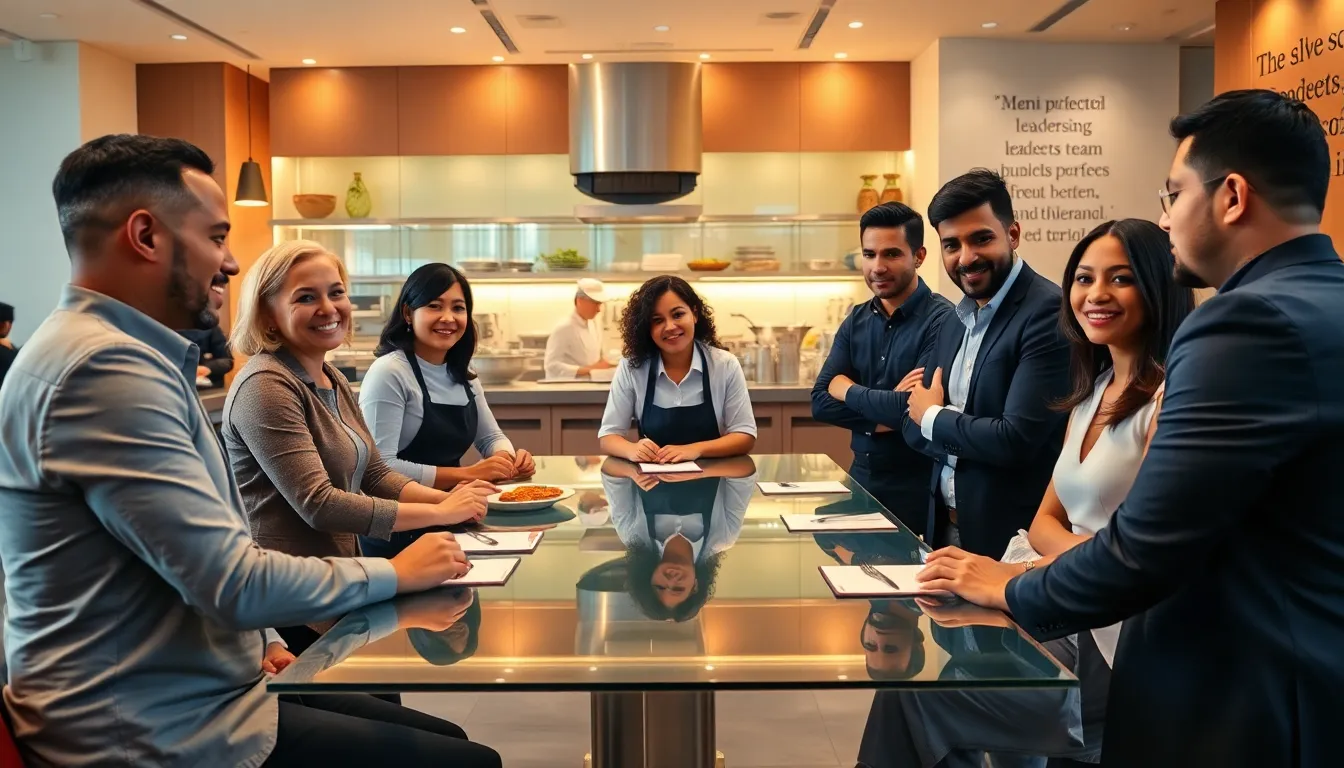In the bustling world of restaurants, leadership is not just about shouting orders from the kitchen. It’s an art form, a balancing act that can make or break the entire dining experience. Think of it like constructing the perfect dish: it requires the right ingredients, a sprinkle of finesse, and a dash of creativity. If you’ve ever wondered why some restaurants thrive while others falter, the answer often lies in the quality of their leadership. So, let’s jump into the essential lessons that every restaurant leader should embrace to turn their eatery into a culinary haven.
Table of Contents
ToggleThe Importance of Leadership in the Restaurant Industry

In the fast-paced restaurant industry, effective leadership can seem like a rare commodity. Yet, it is the linchpin that holds everything together. A strong leader sets the tone for both the staff and the clientele. They inspire, motivate, and guide their teams through the inherent chaos of service. The best restaurants often showcase leaders who understand the importance of developing a clear vision and culture. These leaders instill a sense of purpose, helping staff grasp their roles in the bigger picture.
Good leadership also creates a supportive environment. Employees are more likely to go above and beyond when they feel appreciated and understood. This approach not only enhances job satisfaction but also translates into better service for customers. A restaurant that operates on solid leadership can adapt and innovate, ensuring longevity in an ever-changing industry.
Building a Strong Team Culture
Creating a robust team culture is essential in any restaurant. When employees feel like they belong, they are far more likely to contribute positively. One effective way to foster this culture is through effective communication strategies.
Effective Communication Strategies
Transparency is key. Regular team meetings can address concerns, celebrate successes, and outline future goals. Also, employing tools like feedback apps or suggestion boxes allows employees to voice ideas anonymously, fostering an open dialogue. Incorporating team-building activities outside of work solidifies relationships as well, transforming colleagues into friends.
Fostering Trust and Collaboration
Employee trust is built over time through consistent actions and support. Leaders who actively listen to their teams cultivate an atmosphere of collaboration. Recognizing individual contributions and encouraging teamwork leads to greater synergy. Eventually, a team that collaborates effectively is a force to be reckoned with.
Empowering Employees for Success
Empowering employees is like giving them the secret recipe to success. When staff members are equipped with the right skills and knowledge, not only do they thrive, but the restaurant flourishes as well.
Training and Development Opportunities
Investing in training programs pays off in dividends. Workshops on customer service, culinary techniques, or even conflict resolution can make all the difference. The more knowledgeable your employees become, the more confident they are in their roles. This empowerment translates into efficient service, creating a ripple effect of positivity through the restaurant.
Recognizing and Rewarding Performance
Recognizing employees for their hard work and dedication is crucial for maintaining morale.
Leading Through Challenges and Change
Every restaurant faces challenges, whether it’s staffing shortages or fluctuating demand. A strong leader navigates these changes with grace, ensuring that their team remains buoyant. Acknowledging efforts during tough times reinforces the bond among team members and propels the restaurant forward.
Implementing Feedback Loops
Feedback is a two-way street. Regularly requesting and acting on employee feedback allows for continuous improvement. This approach not only enhances efficiency but also gives employees a stake in the restaurant’s success. When they see their ideas implemented, it fosters a sense of ownership and pride in their work.
Cultivating Customer-Centric Leadership
Great restaurant leaders know that understanding customer needs is paramount. They don’t merely welcome patrons: they anticipate their desires.
Understanding Customer Needs and Expectations
Conducting surveys or utilizing social media to gather customer feedback can be invaluable. Paying attention to trends and preferences allows leaders to adjust their offerings. Also, an attentive staff who understands these customer insights can deliver exceptional service, ensuring that repeat visits become the norm.
Creating Memorable Dining Experiences
Memorable experiences are what keep guests coming back for more. It goes beyond just serving food, it’s about creating moments that linger in diners’ memories. Restaurant leaders must foster creativity in their team to enhance these experiences. Whether it’s through unique menu items, thoughtful decor, or exceptional service, the goal is to curate an environment that resonates.
Encouraging staff to express themselves and innovatively engage with customers can lead to surprises that elevate the dining experience. It’s these little touches that transform a standard dinner into a cherished memory.








